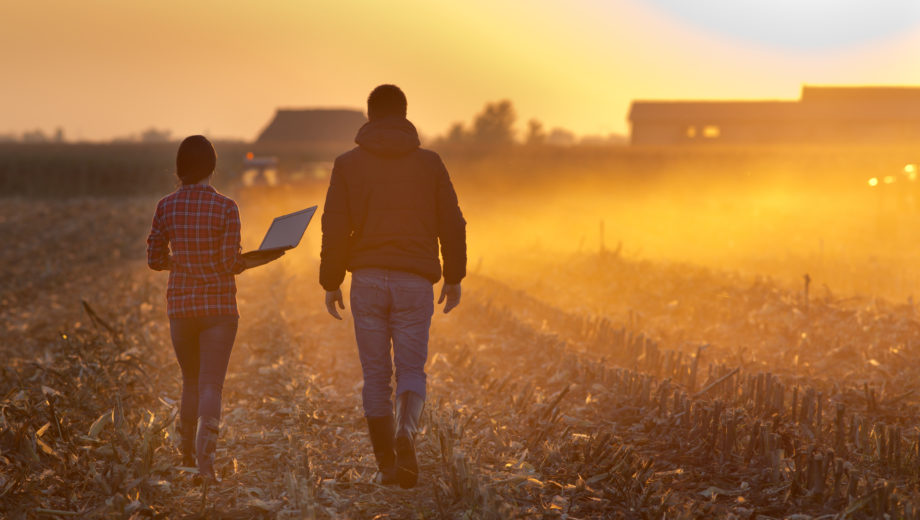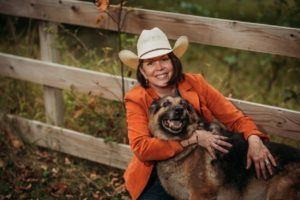
Exploring the social side of sustainable agriculture
As a social scientist working in the agriculture industry, I am often asked: “Cami, what is a social scientist and what, exactly do you do?” People’s curiosity is understandable, especially when most associate the ag industry and farming with disciplines like plant breeding, agronomy, and plant genetics.
The field of social science encompasses many disciplines including (but not limited to) economics, sociology, humanities, communications, and behavioral sciences. While on the surface social science and agriculture may seem like strange bedfellows, the façade quickly melts away when you consider just how important food is to societies. It not only nourishes us: food also brings people together. Food production—and, by default, agriculture—is woven into the social fabric of our lives.
As a social scientist and former public sector researcher in agriculture, I spent years working with and surveying farmers and others in the industry, asking any one of a number of economic, behavioral, or production-based research questions. Those experiences, paired with my upbringing in a farming community, taught me two key realities: Farming can be a socially isolating vocation so, by default, farmers can be fiercely independent; and farmers like to talk to farmers.
Just as agriculture is woven into the social fabric of our lives, the need for social connection is embedded within agriculture—and sometimes it is expressed in ways we may not expect. In my work at Bayer, I use social science to better understand issues such as public perceptions of agriculture and the (behavioral) science behind science communication. Working as a member of the Midwest Row Crop Collaborative, we are applying social science to better understand the process of behavior change: how does it happen, who must be engaged in it, and what must exist for behaviors to change on large scale? Appreciating these nuances becomes especially important as we consider the roles that MRCC’s corporate and non-profit members should play to encourage and support the on-farm adoption of sustainable production practices.
It’s been a few years since I was a practicing researcher in this space, so when the MRCC work group devoted to engaging agricultural networks as part of MRCC’s theory of change began to explore some opportunities for work, I was eager to delve into the existing academic research to better understand the gaps in knowledge related to behavioral science in agriculture. While the product of that research was filled with insights from academics determined to build our collective awareness of the topic, there are five that stood out to me for their implications on current work and projects in development:
- Farmers are not a homogenous group.
Communications efforts need to be tailored to meet expectations or to resonate with such a differentiated audience. While demographics play a role in understanding difference among farmers, it’s certainly not exhaustive: some are landowners and some are not; some are intrigued by new ways of working while others embrace a more ‘wait-and-see’ attitude; and, the geo-political regions, soil conditions, and climate pressures in which they farm vary—which all has implications for the messages that they find most persuasive and the best strategies for delivering them. - Early adopters of sustainable agriculture practices are frequently considered “systems thinkers.” Systems thinking (ST) is a process by which an individual can recognize a broader system or context and understand the interconnected parts and patterns. Simply put, systems thinkers see ‘the bigger picture’ and are willing and able to act to improve farming in the long-term. Regenerative and sustainable agriculture practices may naturally appeal to systems thinkers, as these sustainable practices (cover crops, for example) operate most effectively alongside other practices, must be adapted to local conditions, and usually require a few years of implementation to maximize their payoff. While research indicates that there is a correlation between systems thinking and adoption of conservation practices, we are still in the early stages of understanding the complexity of these connections, and more research is required.
- There is potential for more powerful messaging, particularly for those not considered early adopters.
Certainly, there is much more to the success of driving practice adoption than communication, including the incentives and infrastructure necessary to support the farmer’s success. However, research has demonstrated that communications primarily featuring substantial financial incentives don’t produce the farmer interest necessary for scaled adoption—showing us that farmers need more than just financial incentives to change their growing practices. - All parts of the value chain should push for systems thinking to play a greater role in their work.
While the concept of systems thinking can be a frame by which to further evaluate on-farm behavior, it may prove more useful in guiding the efforts of the rest of us along the value chain. Rather than pushing farmers to transform the way they see the world in order for current messaging to be more resonant, we should instead push to integrate systems thinking in how we design and execute programs in order to change how the agricultural and food system functions—relieving some of the communications pressure. - By answering questions about behavior change and farmer decision-making, we’re able to strengthen the return on investment of current and future financial commitments.
For many, the more scientific aspects of sustainable agriculture may relate to measuring the amount of carbon held in the soil or the amount of nitrogen or topsoil kept out of streams and rivers. However, social science can play a role in helping us to understand on-farm behavior, to proactively plan and address structural or network-based challenges, and to assess sustainability efforts overall. Products of expanded social science investment could include (but aren’t limited to) the development of simulation and conceptualization tools to help us understand the adoption landscape, network analyses to better understand connections and relationships, and more effective communications to help us tap into the power of people aligned behind a goal.
Thanks to the work of leading social scientists whose efforts are shaping what we know today, like Linda Prokopy with Purdue University, we have a strong body of research to work from and clear opportunities for future exploration. With the use of a variety of social science methods like surveys, qualitative interviews, or focus groups, we can identify, contextualize, and respond to broader social and behavioral signals active in the food and agricultural system to, among other goals, accelerate the adoption of sustainable agriculture practices.
When we reflect on the role that systems thinking has on behavior change and the role that people have in constructing and upholding systems, we can’t afford to push the responsibility of behavior change onto farmers alone—they don’t operate in isolation, and the impacts of how crops are grown are felt collectively. As we seek to maximize the ways that we can encourage and support the on-farm adoption of sustainable production practices, maybe the rest of us would do well to see the ‘bigger picture’ too. There is need for learning and action for all of us along the agriculture value chain.

Cami Ryan, PhD, has worked in the area of agriculture and ag sciences for over 25 years—most of that time as a public sector researcher—focused on topics like innovation and agriculture policy, social networks and social network analysis, science communication and public perceptions of agriculture and science.
Currently the Social Sciences Lead with Regulatory Scientific Affairs (RSA) with Bayer Crop Science, she is responsible for strengthening relationships with social, behavioral, and political scientists. In this role, Dr. Ryan leverages an expanding scientific network in North America and around the world to more closely examine and understand policy, regulations, consumer behavior, and acceptance of agricultural innovations. Originally hailing from Saskatchewan, Cami resides with her spouse on a picturesque little farm outside of St. Louis, Missouri, along with a few horses and their dogs, Patsy and Dolly.